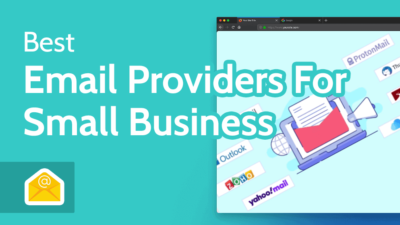
Invoicing is a crucial aspect of running a small business, as it ensures timely payments and helps maintain healthy cash flow. However, manual invoicing processes can be time-consuming and prone to errors. This is where invoicing software comes into play, providing small businesses with efficient and automated solutions for managing their invoicing needs. In this article, we will explore the benefits of invoicing software for small businesses, discuss key features to consider, and provide insights on selecting the right invoicing software for your business requirements. Section 1: Understanding the Importance of Invoicing Software - Discuss the significance of using invoicing software for small businesses, including: - Time savings: Automation eliminates the need for manual data entry and calculation, saving time and reducing administrative burden. - Accuracy: Invoicing software minimizes human errors, ensuring accurate calculations and professional-looking invoices. - Cash flow management: Timely and efficient invoicing helps maintain a healthy cash flow, improving financial stability. - Customer satisfaction: Quick and accurate invoicing enhances customer experience, leading to better relationships and repeat business. Section 2: Key Features of Invoicing Software - Discuss essential features to consider when selecting invoicing software, such as: - Customizable invoice templates: Ability to create professional and branded invoices tailored to your business needs. - Automated invoicing: Set up recurring invoices and automatic reminders for overdue payments. - Online payments: Integration with payment gateways to facilitate online payment options, improving convenience for customers. - Expense tracking: Track and categorize expenses, allowing for better financial management and reporting. - Reporting and analytics: Generate reports on outstanding invoices, revenue, and other financial metrics for informed decision-making. - Client management: Maintain a database of clients, track their payment history, and manage contact information. Section 3: Types of Invoicing Software - Discuss different types of invoicing software available for small businesses, such as: - Standalone invoicing software: Dedicated software specifically designed for invoicing and billing purposes. - Small business accounting software: Comprehensive accounting solutions that include invoicing features alongside other financial management tools. - Online invoicing platforms: Web-based platforms that offer invoicing functionality accessible from anywhere with an internet connection. Section 4: Factors to Consider When Choosing Invoicing Software - Discuss key considerations for selecting the right invoicing software for your small business, including: - Business size and scalability: Evaluate whether the software can accommodate the size and growth potential of your business. - Integration capabilities: Consider the software's ability to integrate with existing systems, such as accounting software or customer relationship management (CRM) tools. - User-friendliness: Assess the ease of use and intuitive interface of the software, as well as the availability of customer support. - Cost: Evaluate the pricing structure, including any monthly or annual fees, and consider the software's value in relation to your business needs. - Security: Ensure the software provides adequate data security measures to protect sensitive financial information. Section 5: Implementing and Optimizing Invoicing Software - Provide guidance on implementing and optimizing invoicing software in your small business, including: - Data migration: If transitioning from manual or existing systems, outline the steps for transferring data to the new software. - Customization: Maximize the software's potential by customizing invoice templates, payment terms, and branding elements. - Training and onboarding: Ensure employees are familiar with the software's features and functionalities through training sessions or tutorials. - Regular updates and maintenance: Keep the software up to date with the latest versions and patches to benefit from new features and security enhancements. - Monitoring and evaluation: Continuously assess the software's performance and gather feedback from users to identify areas for improvement. Section 6: Best Practices for Effective Invoicing - Provide best practices for optimizing your invoicing process, including: - Clear and concise invoices: Ensure invoices contain all necessary information, including payment terms, due dates, and contact details. - Regular invoicing: Establish a consistent invoicing schedule to maintain a steady cash flow and minimize late payments. - Proactive communication: Follow up with clients on outstanding invoices, send payment reminders, and promptly address any billing inquiries. - Record-keeping: Maintain organized records of invoices, payments, and related documents for future reference and financial reporting. - Continual improvement: Regularly review and refine your invoicing process based on feedback, industry best practices, and changing business needs. Conclusion: Invoicing software offers small businesses a range of benefits, from time savings and accuracy to improved cash flow management and customer satisfaction. By understanding the importance of invoicing software, considering key features and factors for selection, and implementing best practices, small businesses can streamline their invoicing processes, enhance financial management, and ultimately drive growth and success.













